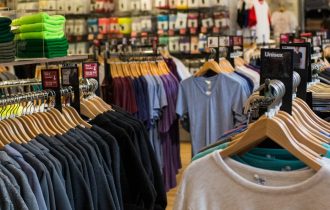The Impact of Technology on Apparel Design
In the fast-paced world of fashion, technology has emerged as a transformative force, revolutionizing the way apparel is designed, manufactured, and consumed. From innovative design tools to sustainable production methods, technology has opened up a realm of possibilities for fashion designers and consumers alike. In this article, we will explore the profound impact of technology on apparel design and its role in shaping the future of the fashion industry.
Digital Design and Virtual Prototyping
Digital design tools have become essential in the modern apparel design process. Computer-aided design (CAD) software allows designers to create intricate and precise patterns, prints, and silhouettes. This not only expedites the design process but also provides designers with the flexibility to experiment and iterate designs without the limitations of traditional hand-drawing techniques.
Virtual prototyping is another game-changing technology in apparel design. Designers can create 3D digital models of garments, allowing them to visualize how the design will look and fit on a virtual body. This virtual prototyping process minimizes the need for physical samples, reducing waste and saving valuable time and resources in the design and production stages.
Sustainable Materials and Production Methods
Technology has also played a crucial role in promoting sustainability in the apparel industry. With growing environmental concerns, there is a rising demand for eco-friendly materials and production methods.
Innovations in fabric technology have led to the development of sustainable materials such as organic cotton, recycled polyester, and Tencel, made from sustainably sourced wood pulp. These eco-friendly textiles offer viable alternatives to traditional materials and reduce the industry’s environmental footprint.
Additionally, advancements in manufacturing technologies have enabled more sustainable production processes. Digital printing, for instance, allows for on-demand and localized production, reducing excess inventory and waste. Furthermore, 3D knitting and robotic cutting techniques optimize material usage, minimizing fabric waste during the production phase.
Personalization and Mass Customization
Technology has empowered consumers to take a more active role in the design process. Mass customization platforms enable shoppers to personalize clothing items according to their preferences, from selecting colors and patterns to choosing specific sizes and fits.
Personalization goes beyond just aesthetics; it also encompasses functional features. With the rise of wearable technology, clothing items can now be embedded with smart sensors, biometric tracking devices, and even LED lights, enhancing both style and functionality.
E-commerce and Virtual Try-Ons
The rise of e-commerce has reshaped the retail landscape, making fashion accessible to consumers worldwide. Online shopping platforms offer a vast selection of apparel, allowing consumers to browse and purchase clothing from the comfort of their homes.
Virtual try-on technologies have enhanced the online shopping experience. Augmented reality (AR) and virtual reality (VR) applications enable consumers to virtually “try on” clothing items, visualizing how they would look and fit before making a purchase. This technology reduces the uncertainty of online shopping, improving customer satisfaction and reducing return rates.
Data Analytics and Consumer Insights
Data analytics has become a powerful tool for apparel brands to gain valuable insights into consumer preferences and behaviors. Through the analysis of customer data, brands can identify popular trends, anticipate demand, and tailor their product offerings to meet consumers’ specific needs.
Moreover, social media platforms have become crucial in gathering real-time feedback and engaging with consumers directly. Brands use social media to showcase their designs, collaborate with influencers, and connect with their target audience, creating a more interactive and inclusive fashion community.
Virtual Fashion Shows and Digital Runways
The advent of technology has also transformed the way fashion shows are presented. Digital runways and virtual fashion shows have become an alternative to traditional runway events, especially during times when physical gatherings are challenging.
Virtual fashion shows offer creative freedom and immersive experiences for viewers. They allow designers to experiment with different visual elements, storytelling techniques, and digital effects, transcending the limitations of physical runway shows.
The impact of technology on apparel design is far-reaching, influencing every aspect of the fashion industry. From design tools and sustainable materials to e-commerce platforms and virtual fashion shows, technology continues to shape the way fashion is created, presented, and consumed.
As technology continues to evolve, the fashion industry will undoubtedly witness even more groundbreaking innovations and transformative changes. Embracing these advancements in a responsible and ethical manner will not only enhance creativity and efficiency but also pave the way for a more sustainable and inclusive fashion future. By leveraging the power of technology, fashion designers and brands can continue to push the boundaries of design and create meaningful experiences for consumers worldwide.











